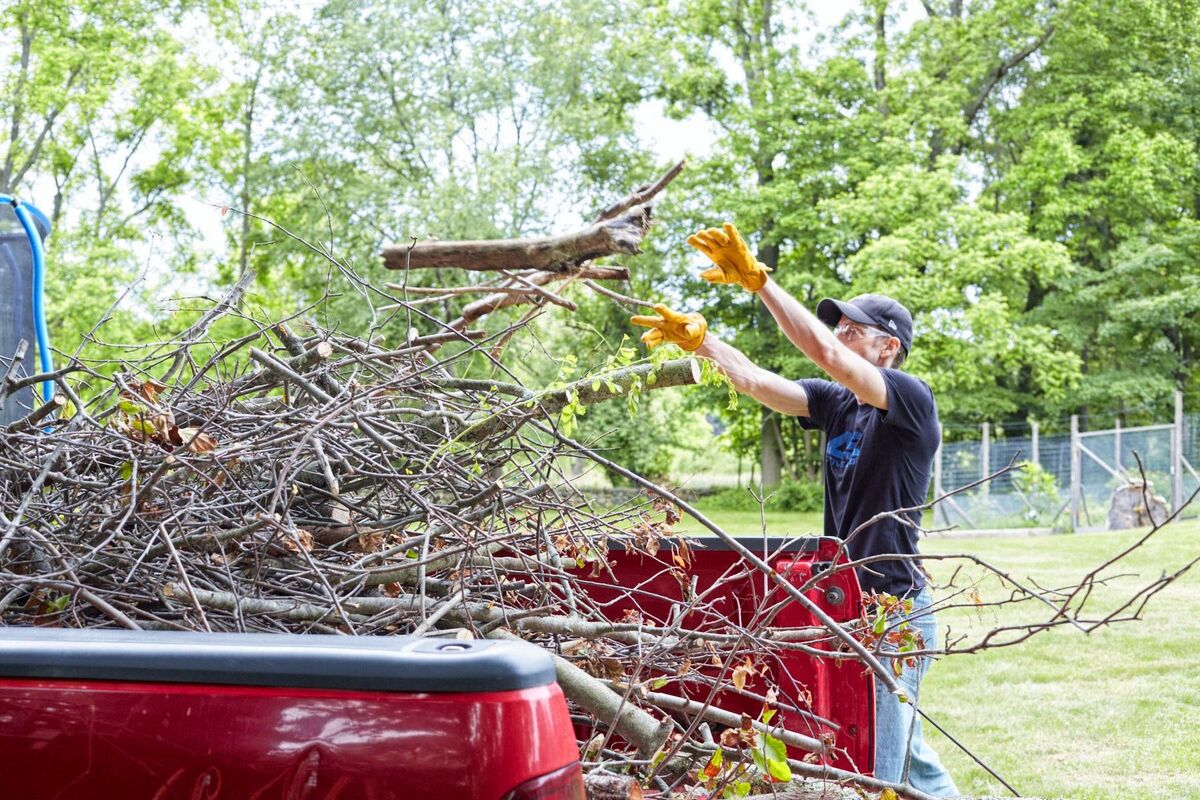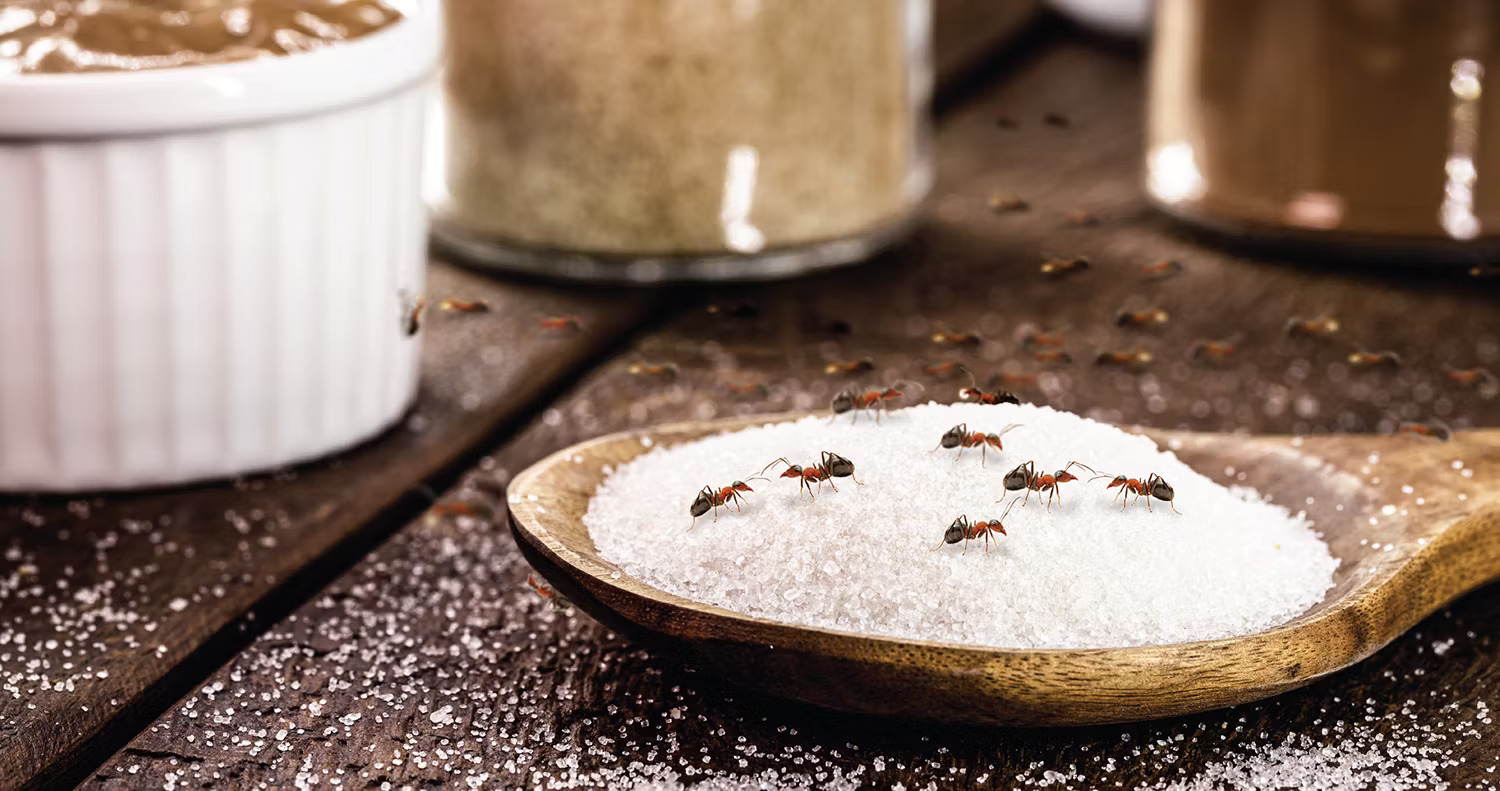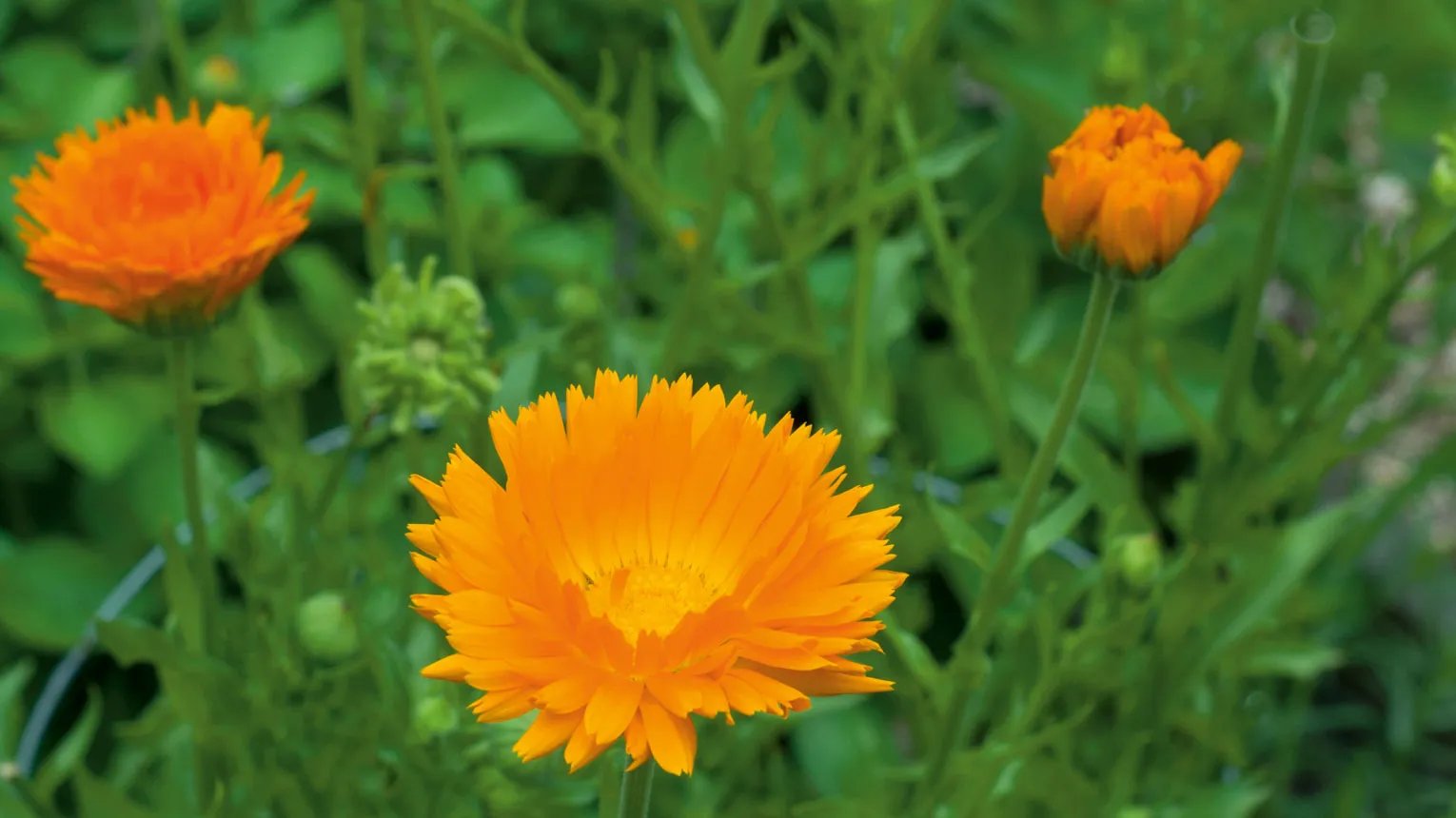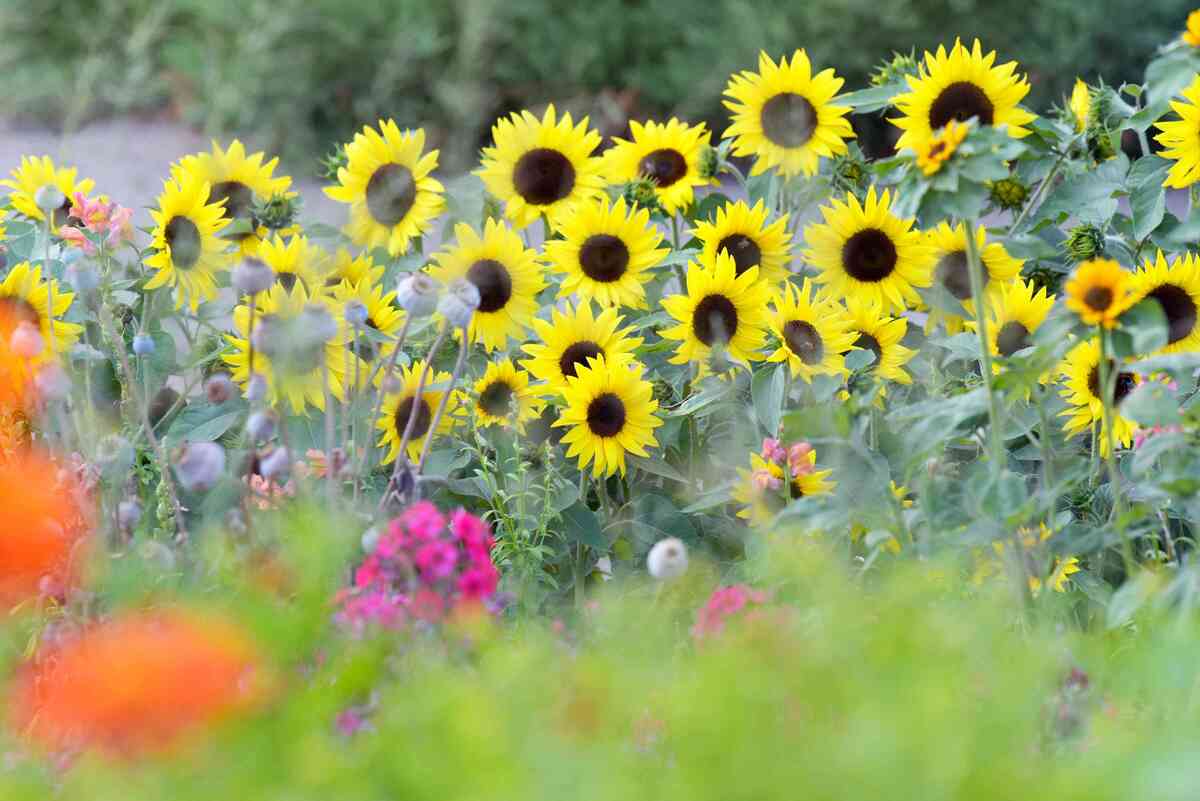Home>Gardening Tips and Tricks>Problem Solving>How To Clear Small Trees And Brush


Problem Solving
How To Clear Small Trees And Brush
Modified: January 22, 2024
Learn how to solve the problem of clearing small trees and brush with our expert tips and techniques. Say goodbye to unwanted vegetation and reclaim your space.
(Many of the links in this article redirect to a specific reviewed product. Your purchase of these products through affiliate links helps to generate commission for Chicagolandgardening.com, at no extra cost. Learn more)
Table of Contents
- Introduction
- Understanding the Importance of Clearing Small Trees and Brush
- Assessing the Area and Identifying the Trees and Brush to Clear
- Essential Tools and Safety Gear Required for Clearing Small Trees and Brush
- Step-by-Step Guide to Clearing Small Trees and Brush
- Disposing of Cleared Trees and Brush Properly
- Tips and Techniques for Efficient Clearing
- Common Mistakes to Avoid When Clearing Small Trees and Brush
- Benefits of Clearing Small Trees and Brush
- Conclusion
Introduction
Clearing small trees and brush from your property can have a multitude of benefits, from enhancing the aesthetics of your landscape to reducing the risk of wildfires. Whether you’re a homeowner looking to reclaim a neglected yard or a landowner aiming to maintain a healthy ecosystem, knowing how to effectively clear small trees and brush is essential.
While it may seem like a daunting task, with the right tools, knowledge, and techniques, you can successfully clear small trees and brush without breaking a sweat. In this article, we will guide you through the process of clearing small trees and brush, step-by-step, ensuring a safe and efficient experience.
Before we dive into the specifics, it’s important to understand why clearing small trees and brush is necessary. Over time, unmanaged vegetation can become a nuisance, obstructing views, limiting usable space, and harboring pests. Additionally, dense brush and undergrowth can pose a significant fire hazard, particularly in areas prone to wildfires.
By clearing small trees and brush, you gain control over your property’s appearance and create a safer environment. The process involves identifying the trees and brush you want to remove, gathering the necessary tools and safety gear, and following a systematic approach to clear the area.
In the following sections, we will explore the significance of clearing small trees and brush, discuss the tools required, outline a step-by-step guide, offer disposal solutions, provide tips for efficient clearing, and highlight common mistakes to avoid. By the end of this article, you’ll be equipped with the knowledge and confidence to tackle the task of clearing small trees and brush on your own.
Understanding the Importance of Clearing Small Trees and Brush
Clearing small trees and brush plays a vital role in maintaining the health and aesthetics of your property. Let’s delve into some of the key reasons why this task is essential.
1. Fire Prevention: One of the most significant reasons for clearing small trees and brush is to minimize the risk of wildfires. In dry climates, dense vegetation can act as fuel, allowing fires to spread quickly and devastate entire areas. By regularly clearing small trees and brush, you create a firebreak and reduce the potential for flames to engulf your property.
2. Improving Visibility: Overgrown vegetation can impede visibility, obscuring scenic views and limiting natural light. By clearing small trees and brush, you open up your property, allowing for better sightlines and enhancing the overall aesthetics of the landscape.
3. Enhancing Property Value: A well-maintained property with cleared trees and brush not only looks visually appealing but also increases its market value. By investing time and effort into clearing small trees and brush, you can potentially attract more buyers and improve the overall appeal of your property.
4. Creating Usable Space: Unwanted small trees and brush can take up valuable space and restrict the use of your property. By clearing them, you can reclaim land for various purposes, such as establishing outdoor living areas, constructing gardens, or setting up recreational spaces.
5. Promoting Plant Diversity: Clearing small trees and brush allows for better management of vegetation, ensuring healthy growth of desirable plants. It creates space for diverse plant species to flourish, promoting biodiversity and attracting wildlife to your property.
6. Reducing Pest Infestation: Dense brush and overgrown trees can serve as breeding grounds for pests, including rodents and insects. By clearing small trees and brush, you eliminate potential harborage sites, minimizing the risk of infestations and protecting your property from damage.
By understanding the importance of clearing small trees and brush, you can prioritize this task and reap the numerous benefits it provides. Whether it’s fire prevention, enhancing property value, or promoting plant diversity, the impact of this essential maintenance activity goes beyond just a tidy yard – it contributes to a safer, more beautiful, and sustainable environment.
Assessing the Area and Identifying the Trees and Brush to Clear
Before embarking on the task of clearing small trees and brush, it’s essential to assess the area and identify the specific vegetation that needs to be removed. This strategic approach ensures that you are targeting the right trees and brush while minimizing any potential damage to desirable plants. Here’s how you can effectively assess the area and identify what needs to be cleared.
1. Walk the Property: Take a thorough walk around your property to survey the entire area. Make note of any small trees, shrubs, or brush that are unhealthy, overgrown, or obstructing desired views or pathways.
2. Identify Hazardous Trees: Look for any trees that are diseased, structurally unsound, or leaning precariously. These are potential hazards and should be prioritized for removal to avoid accidents in the future.
3. Consider the Growth Pattern: Take note of how the trees and brush are growing and spreading. Are there any trees encroaching on buildings or power lines? Are there dense patches of brush preventing the healthy growth of other plants? Identifying these growth patterns will help you determine the areas that need immediate attention.
4. Consult Local Regulations: Depending on your location, there may be local regulations or restrictions on removing certain trees or brush. Check with your local municipality or homeowners’ association to ensure compliance with any guidelines or permits required.
5. Consult an Expert: If you are uncertain about the identification of specific trees or brush, or if you need assistance in assessing the overall health of your vegetation, consider consulting an arborist or a landscape professional. They can provide valuable insights and recommendations based on their expertise.
Once you have assessed the area and identified the trees and brush that need to be cleared, you can move forward with gathering the necessary tools and safety gear. Remember, a thoughtful and careful approach to assessing the area will help ensure that you target the right vegetation and achieve the desired results without causing unnecessary harm to your property.
Essential Tools and Safety Gear Required for Clearing Small Trees and Brush
Clearing small trees and brush requires the use of specific tools and safety gear to ensure a safe and efficient process. Having the right equipment at your disposal will enable you to tackle the task effectively while minimizing the risk of injury. Here are the essential tools and safety gear you’ll need:
1. Chainsaw: A chainsaw is a crucial tool for cutting down small trees and larger branches. Ensure that you choose a chainsaw with the appropriate power and chain size for the task at hand. Always follow safety guidelines and receive proper training before using a chainsaw.
2. Hand Pruners and Loppers: Hand pruners and loppers are essential for cutting smaller branches and removing smaller brush. These tools provide precise cutting and are ideal for working on shrubs and smaller trees.
3. Machete or Brush Clearing Tool: A machete or brush clearing tool is useful for cutting through thick brush and undergrowth. It helps to clear areas with dense vegetation effectively.
4. Protective Gear: When clearing small trees and brush, it’s crucial to prioritize safety. Wear a hard hat to protect your head from falling branches and debris. Invest in a pair of safety goggles or glasses to safeguard your eyes from flying debris. Additionally, wear ear protection to minimize noise pollution from chainsaws and other machinery. Finally, use sturdy work gloves to protect your hands from cuts and scratches.
5. Protective Clothing: Wear long-sleeved shirts and long pants made of durable material to protect your arms and legs from scratches and insect bites. Choose sturdy work boots with slip-resistant soles to provide proper foot support and protection.
6. Safety Equipment: Keep a first aid kit nearby in case of any minor injuries. It’s also a good idea to have a fire extinguisher on hand, especially if you are working in areas prone to wildfires.
7. Work Gloves and Safety Boots: To ensure a secure grip, use work gloves when handling tools and clearing debris. Safety boots with steel toes provide extra protection for your feet.
8. Personal Protective Equipment (PPE): If you are using a chainsaw or operating heavy machinery, consider wearing a safety helmet with ear protection, a visor, and protective chaps to protect your legs.
Remember, using the appropriate tools and safety gear is crucial to prevent accidents and ensure a successful clearing process. Always follow the manufacturer’s instructions for using the tools safely and seek professional guidance if you are not familiar with operating specific machinery.
Step-by-Step Guide to Clearing Small Trees and Brush
Clearing small trees and brush requires a systematic approach to ensure efficiency and safety. By following this step-by-step guide, you can tackle the task with confidence:
1. Survey the Area: Walk the property and assess the area you plan to clear. Take note of any hazardous trees, dense brush, or unwanted vegetation that needs to be removed.
2. Prepare the Tools and Safety Gear: Gather all the necessary tools and safety gear, including a chainsaw, hand pruners, loppers, protective clothing, gloves, and safety goggles. Ensure that the tools are sharp and in good working condition.
3. Start with Small Trees and Brush: Begin by removing smaller trees and brush using hand pruners or loppers. Cut the smaller branches first before moving on to the trunk.
4. Clear Larger Trees: For larger trees, use a chainsaw to cut them down. Start by making a horizontal cut on the side you want the tree to fall. Follow with a angled cut above the horizontal cut to create a wedge. Finally, make a horizontal cut from the opposite side to fell the tree safely.
5. Manage the Debris: Stack cleared branches and brush neatly in a designated area for disposal. If possible, utilize the larger branches for firewood or consider chipping them into mulch for landscaping purposes.
6. Remove Stumps: If you want to remove the stumps as well, use a stump grinder or hire a professional stump removal service. Alternatively, you can leave the stumps if they are not obstructing your plans for the cleared area.
7. Clean Up the Area: Once the trees and brush have been cleared, remove any remaining debris and rake the area to ensure a clean and clear space.
8. Dispose of Debris: Depending on local regulations, you can dispose of the debris through curbside pickup, a community composting facility, or a designated disposal site. Contact your local waste management authority for guidance on proper disposal methods.
9. Maintain the Cleared Area: To prevent regrowth of unwanted vegetation, regularly maintain the cleared area by removing new shoots and implementing preventive measures like mulching or applying herbicides.
Remember to take regular breaks during the clearing process to rest and hydrate. If at any point the task becomes too challenging or unsafe, don’t hesitate to seek professional assistance. By following this step-by-step guide, you can successfully clear small trees and brush and transform your property into a well-maintained and aesthetically pleasing space.
Disposing of Cleared Trees and Brush Properly
Once you have cleared small trees and brush from your property, it’s important to dispose of the debris properly and responsibly. Proper disposal not only ensures a clean and tidy environment but also helps prevent the spread of invasive species and promotes sustainable waste management. Here are some effective methods for disposing of cleared trees and brush:
1. Curbside Pickup: Check with your local waste management authority to see if they offer curbside pickup for tree and brush debris. They may have specific guidelines on how to prepare the materials for collection, such as bundling or bagging them securely.
2. Community Composting Facilities: Many communities have composting facilities that accept tree and brush debris. These facilities process the organic materials into nutrient-rich compost that can be used for landscaping and gardening purposes. Research local composting options and inquire about any specific requirements or fees.
3. Mulching: If you have the equipment and space, consider mulching the cleared trees and brush. Mulching involves grinding the debris into small wood chips that can be used as a natural and beneficial ground cover. These wood chips can help suppress weeds, retain moisture in the soil, and improve overall soil health.
4. Wood Salvaging: If you have larger branches or trunks, consider salvaging them for firewood or other uses. Chop the wood into manageable sizes and allow it to dry properly before using it as firewood. Properly cured firewood can provide an excellent source of heat during the colder months.
5. Renting a Chipper: If you have a large amount of cleared trees and brush, renting a wood chipper might be a cost-effective solution. A chipper can turn the debris into small wood chips that can be used for landscaping or easily disposed of.
6. Landfill Disposal: If all other options are unavailable or not suitable, you may need to dispose of the cleared trees and brush in a landfill. This should be considered as a last resort, as it is not the most environmentally friendly solution. Check with your local landfill facility to determine any specific requirements or fees associated with disposing of tree and brush debris.
Remember to consider the environmental impact and local regulations when choosing the appropriate disposal method. By responsibly disposing of cleared trees and brush, you contribute to a sustainable waste management system and help protect the environment.
Tips and Techniques for Efficient Clearing
Clearing small trees and brush can be a time-consuming and physically demanding task. To make the process more efficient and effective, it’s essential to employ proper techniques and strategies. Here are some valuable tips to help you clear small trees and brush efficiently:
1. Plan Your Approach: Before you start clearing, create a plan of action. Divide the area into manageable sections and prioritize the most challenging or hazardous trees and brush. This helps you stay organized and focused on one area at a time.
2. Start with Smaller Vegetation: Begin by clearing the smaller vegetation, such as shrubs and smaller trees, using hand pruners or loppers. This allows you to gain momentum and create more space to maneuver as you progress to larger trees and brush.
3. Use Proper Cutting Techniques: When using a chainsaw to cut down trees, follow recommended cutting techniques to ensure safety and efficiency. Make horizontal cuts, known as “bucking,” to create manageable log sections that are easier to handle and remove.
4. Work Safely: Always prioritize safety while clearing small trees and brush. Wear appropriate safety gear, use tools correctly, and maintain a distance from falling branches or trees. Take regular breaks and stay hydrated to avoid fatigue and reduce the risk of accidents.
5. Clear the Area Completely: Remove all debris and cleared vegetation from the area after each section is cleared. This prevents tripping hazards, improves visibility, and allows you to accurately assess your progress.
6. Recycle and Reuse: Whenever possible, find ways to recycle or reuse the cleared trees and brush. Consider options like composting, using wood chips for mulch, or salvaging larger branches for firewood. This not only reduces waste but also contributes to sustainable practices.
7. Consider Hiring Professionals: If the task becomes overwhelming or beyond your expertise, don’t hesitate to seek assistance from professional tree services. They have the necessary skills, experience, and equipment to tackle more challenging clearing projects safely and efficiently.
8. Maintain Regular Maintenance: To prevent the regrowth of unwanted vegetation, perform regular maintenance in the cleared areas. Remove any new shoots or plants promptly and consider implementing preventive measures like mulching or applying herbicides.
Remember that clearing small trees and brush is a gradual process, so be patient and allow yourself enough time to complete the task thoroughly. By following these tips and employing efficient techniques, you can streamline the clearing process and achieve your desired results in a more manageable and timely manner.
Common Mistakes to Avoid When Clearing Small Trees and Brush
Clearing small trees and brush requires careful planning and execution to ensure a successful outcome. However, there are some common mistakes that people often make when undertaking this task. By being aware of these pitfalls, you can avoid unnecessary setbacks and ensure a smoother clearing process. Here are some common mistakes to avoid when clearing small trees and brush:
1. Underestimating the Task: Clearing small trees and brush can be more time-consuming and physically demanding than anticipated. Avoid underestimating the size of the job or trying to tackle too much at once. Break the task down into smaller sections and pace yourself accordingly.
2. Skipping Safety Precautions: Safety should always be a top priority when clearing trees and brush. Skipping safety gear, such as hard hats, safety goggles, and gloves, can lead to serious injuries. Always wear the appropriate protective gear and follow safety guidelines at all times.
3. Improper Tool Use: Using tools incorrectly can not only hinder progress but also pose safety risks. Ensure that you know how to properly operate tools like chainsaws, hand pruners, and loppers. Read the instruction manuals, seek guidance if necessary, and practice using the tools before starting the clearing process.
4. Failure to Identify Hazards: Neglecting to identify hazards, such as unstable trees, uneven terrain, or hidden obstacles, can result in accidents. Take the time to thoroughly survey the area and be aware of potential risks before starting the clearing process.
5. Forgetting to Plan for Disposal: Disposing of the cleared trees and brush is often overlooked. Failing to plan for proper disposal ahead of time can lead to complications and delays. Research local options for disposal, such as curbside pickup, composting facilities, or mulching, and make appropriate arrangements.
6. Not Consulting Experts: If you are unsure about the health of a tree or the safest way to remove it, it’s best to consult with an arborist or professional tree service. Their expertise can help avoid unnecessary damage and ensure that the clearing is done correctly.
7. Ignoring Local Regulations: Local regulations and permits may dictate what can be cleared or require certain procedures to be followed. Failing to adhere to these regulations can result in fines or other legal consequences. Familiarize yourself with the guidelines and seek any necessary approvals before starting the clearing process.
8. Not Maintaining Cleared Areas: After clearing small trees and brush, it’s important to regularly maintain the cleared areas to prevent regrowth and maintain the desired results. Failure to address new shoots or apply preventive measures can result in renewed overgrowth and the need for further clearing in the future.
Avoiding these common mistakes will help you carry out the task of clearing small trees and brush more efficiently and safely. By taking the time to plan, prioritize safety, and follow proper procedures, you can achieve a successful clearing process with long-lasting results.
Benefits of Clearing Small Trees and Brush
Clearing small trees and brush from your property offers numerous benefits that go beyond just a visually pleasing landscape. Whether you’re a homeowner or a landowner, understanding the advantages of clearing small trees and brush can help you appreciate the significance of this maintenance task. Here are some key benefits to consider:
1. Improved Aesthetics: By clearing small trees and brush, you can enhance the overall appearance of your property. Removing overgrown vegetation allows for better visibility, opens up space, and creates a cleaner and more inviting landscape.
2. Fire Prevention: Clearing small trees and brush plays a crucial role in reducing the risk of wildfires. Overgrown vegetation can act as fuel, enabling fires to spread quickly and cause significant damage. By clearing combustible materials, you create defensible space and minimize the potential threat of wildfires.
3. Increased Property Value: A well-maintained property is more appealing to potential buyers and can fetch a higher market value. Clearing small trees and brush enhances curb appeal and showcases the full potential of your property, making it an attractive investment for buyers.
4. Expanded Usable Space: Clearing small trees and brush allows you to maximize the utilization of your property. It opens up more area for outdoor activities, such as gardening, landscaping, or creating recreational spaces like patios or play areas.
5. Enhanced Safety: Overgrown trees and brush can present safety hazards. Falling branches or trees can cause injuries or property damage. By clearing these hazards, you create a safer environment for yourself, family members, and visitors to your property.
6. Promotion of Plant Diversity: Clearing small trees and brush helps maintain a healthy balance in your ecosystem. By removing excessive vegetation, you create space for a diverse range of plant species to thrive, promoting biodiversity and attracting wildlife.
7. Reduced Pest Infestation: Overgrown brush and trees provide an ideal habitat for pests, such as rodents and insects. By clearing small trees and brush, you minimize the risk of infestations and protect your property from potential damage caused by pests.
8. Enhanced Sightlines and Views: Removing obstructing trees and brush can improve sightlines and allow for better views. It opens up vistas, highlights natural features, and enhances your enjoyment of the surrounding environment.
9. Environmental Stewardship: Clearing small trees and brush responsibly demonstrates environmental stewardship. Proper disposal methods, such as recycling or mulching, reduce waste and contribute to sustainable practices.
10. Creating a Healthy and Manageable Landscape: Clearing small trees and brush allows for better maintenance of your landscape. It provides you with a clean slate to design and manage your outdoor space according to your preferences, creating a healthier and more manageable environment.
Understanding the benefits of clearing small trees and brush reinforces the significance of this ongoing maintenance activity. From improving aesthetics and property value to reducing fire hazards and enhancing safety, the advantages are substantial. By investing time and effort in clearing small trees and brush, you create a more enjoyable and sustainable environment for yourself and future generations.
Conclusion
Clearing small trees and brush is a task that offers numerous benefits for property owners. From enhancing the visual appeal of the landscape to reducing the risk of wildfires and creating usable space, the advantages are significant. By following a systematic approach, using the right tools and safety gear, and implementing proper techniques, you can successfully clear small trees and brush while ensuring efficiency and safety.
Assessing the area, identifying the specific vegetation to remove, and planning your approach are essential steps in the clearing process. By understanding the importance of clearing small trees and brush, you can prioritize this task and appreciate how it contributes to a safer and more aesthetically pleasing environment.
Equipping yourself with the necessary tools, such as chainsaws, hand pruners, and safety gear, allows you to work effectively and safely. Proper disposal of the cleared trees and brush is crucial, and options such as curbside pickup, composting facilities, or mulching should be considered to minimize waste and promote sustainability.
Throughout the process, it’s important to avoid common mistakes, such as underestimating the task, skipping safety precautions, or failing to plan for disposal. By learning from these pitfalls, you can navigate the clearing process more efficiently and achieve a successful outcome.
Ultimately, clearing small trees and brush transforms your property into a well-maintained space with improved aesthetics, increased property value, and a reduced risk of fire and pest infestation. By promoting plant diversity and creating a safer environment, you contribute to a healthier ecosystem and a more enjoyable living or recreational space.
As you embark on the task of clearing small trees and brush, remember the importance of ongoing maintenance and regular upkeep to sustain the benefits achieved. By incorporating these practices into your routine, you can maintain a beautiful and environmentally balanced landscape for years to come.









